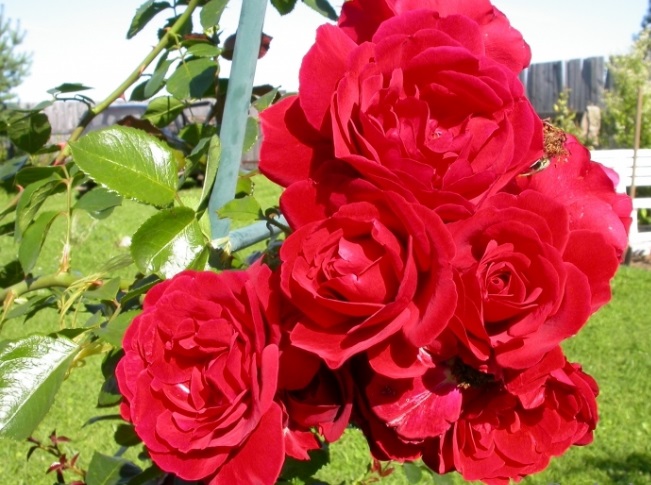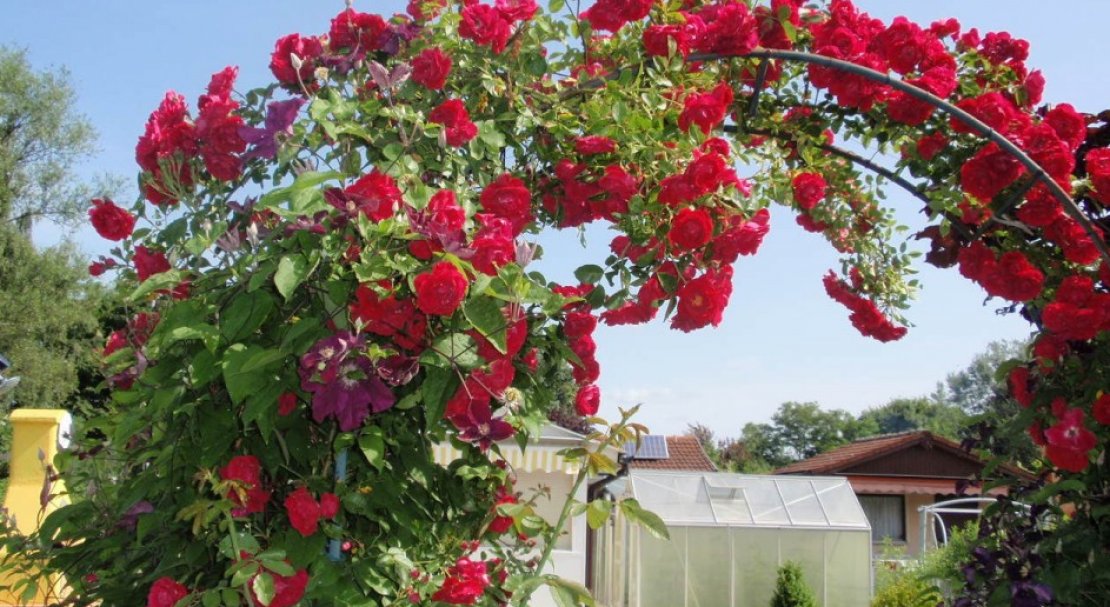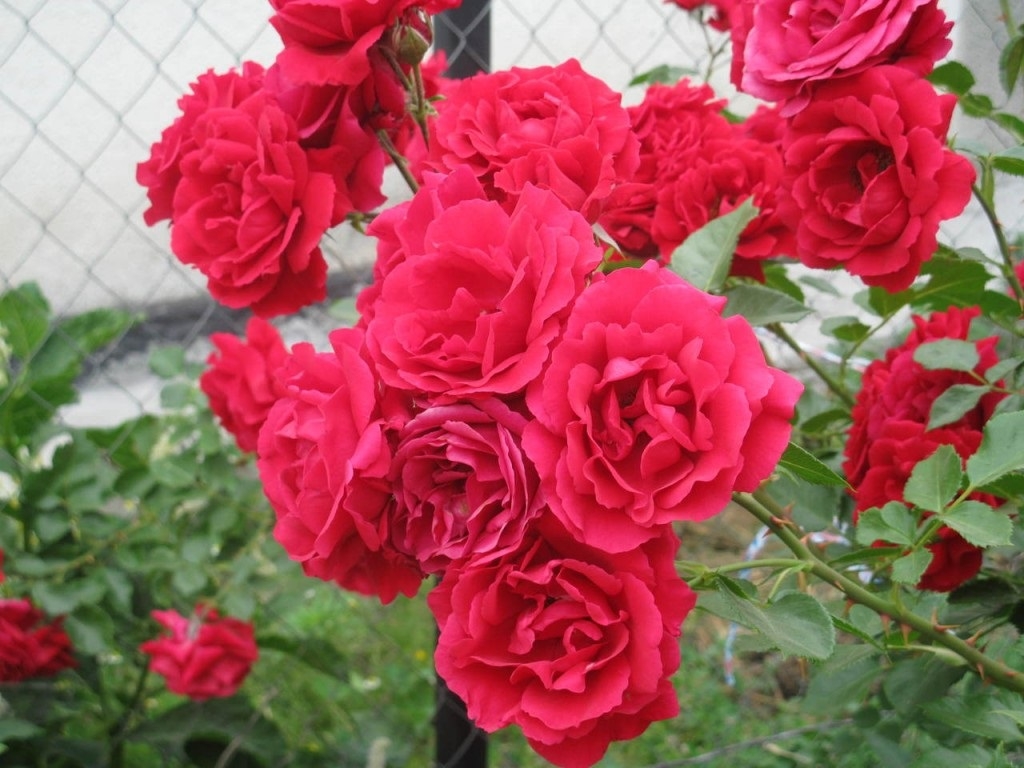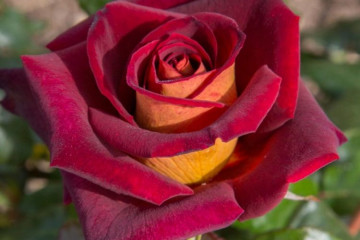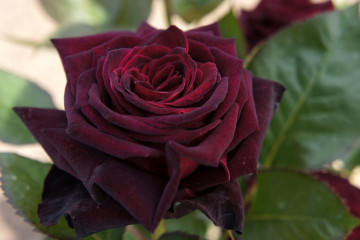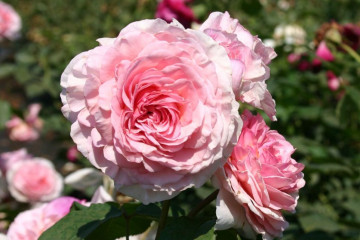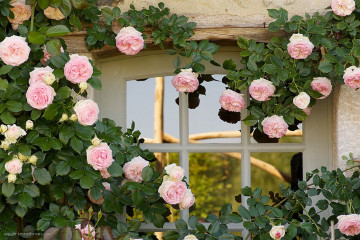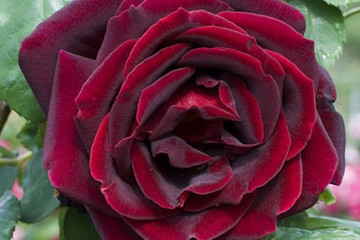Rose Sympathie - description of the variety
Content:
Rose Sympathy is a beautiful climbing plant that is grown by many gardeners. The culture is characterized by excellent decorative properties and unpretentious care. It grows up to 2-4 m in height and has bright scarlet double flowers.
Rose Sympathie (Sympathie) - what is this variety, history of creation
The variety was bred in 1964 by V. Cordes. Culture belongs to climbers. The bushes are distinguished by thick and tough shoots. A rose can be shaped on a stem.
Brief description, characteristic
According to the description of this culture, its flowers have a beautiful red hue, and the leaves are large, dark green in color. The inflorescences reach a diameter of 10 cm. They are distinguished by a velvety texture and strong aroma. Each flower consists of 19-21 petals. Sympathie rose is resistant to precipitation and temperature fluctuations.
The plant has a long flowering period. The first flowers appear in the second week of June. Subsequently, their number gradually decreases, but inflorescences continue to appear until autumn.
Sympathie rose bushes reach 2-4 m in height. They have a branched structure, but at the same time they are quite strong and hardy.
Advantages and disadvantages of the variety
Key Benefits of the Sympathie Climbing Rose:
- resistance to sunlight and temperature fluctuations;
- excellent survival rate after planting;
- frost resistance.
There are no significant flaws in culture. The only drawback is the risk of developing fungal infections.
Use in landscape design
The bushes are great for decorating the facades of houses and other buildings. Often, for growing crops, structures are specially built that contribute to the growth of the bush upward. Arches and hedges are decorated with the same method.
Growing a flower, how to plant it in open ground
In order for the Sympathy rose to please with abundant and lush flowering, it is necessary to competently carry out planting work.
In what form is the landing
For planting roses, it is recommended to use seedlings. They take root well and grow quickly. After a short period of time, the bushes will delight you with lush flowering.
What time is the boarding
Sympathy climbing rose can be planted in the ground in spring or autumn. In the first case, it is worth waiting for the end of the cold. Usually, planting is carried out in April or May. In autumn, the rose is planted in the second half of September or early October.
Location selection
A well-lit area is required for culture. It is best to plant it on the south side. In order for a rose to grow on a fence or wall, it is worth observing an interval of 50 cm.
How to prepare the soil and flower for planting
Climbing rose Sympathy needs a slightly acidic soil. At high acidity parameters, ash is introduced into the soil.The earth should be dug up and mineral fertilizers and organic matter added to it.
Seedlings must be carefully examined and dry or damaged roots removed. Long shoots need to be cut. They should have 4-6 kidneys.
Planting procedure step by step:
- Make indentations, observing an interval of 50 cm.
- Pour a bucket of water into the hole.
- Add mineral fertilizers.
- Place the seedling in the recess and spread the roots.
- Sprinkle with earth and tamp.
Plant care
To succeed in growing a crop, you need to provide it with full and high-quality care.
Watering rules and humidity
Well-settled water is used for irrigation. It is recommended to moisten the soil 1-2 times every 2 weeks. Pour 20-30 liters of water under an adult plant. This must be done in the morning.
Top dressing and soil quality
You need to feed the soil with mineral and organic means. You can purchase ready-made compositions for climbing roses. From organic matter, it is recommended to use humus, manure or compost.
Pruning and replanting
It is recommended to prune the bushes in spring and autumn. Spring pruning aims to remove dead and broken branches. Also during this period, young growth is removed. It is important to carry out the procedure before starting the movement of juices.
In the fall, it is necessary to clear the bush of old and damaged shoots. It is usually recommended to keep 10-13 of the strongest branches.
A rose of this variety does not need transplanting, but over time the soil will be depleted. After 6-8 years, the bush should be rejuvenated and moved to a new place.
Features of wintering a flower
They cover the bush with a significant decrease in temperature. At the end of summer, you need to stop watering. Before the onset of frost, the rose should be removed from the support and the plant should be cut off. First, rotten and damaged shoots are removed, after which they get rid of dry leaves.
Then the prepared bush is twisted, tied and attached to the ground. First, the soil should be covered with dry leaves. From above, the rose must be carefully covered. Foliage, plywood, boards are used as insulation.
Blooming rose
Lush and abundant flowering is characteristic of the Sympathy rose. During this period, the culture needs appropriate care.
A period of activity and rest
The buds appear on the plant at the end of May. From early June to August, flowering is most abundant. By October, the buds become smaller. With the arrival of cold weather, a period of rest begins.
Care during and after flowering
Nitrogen fertilization is not recommended during the flowering period. At this time, it is worth using products based on potassium and phosphorus. They have a beneficial effect on the formation of buds.
What to do if it does not bloom, possible reasons
The lack of flowering may be due to a lack of lighting. In such a situation, it will not be possible to do without a culture transplant. The lack of flowering is often caused by insufficient watering or improper fertilization. In this case, you need to adjust the irrigation schedule and analyze the procedure for using fertilizers.
Flower propagation
It is recommended to propagate the culture by cuttings. For this, you can use winter or summer cuttings.
When is it produced
Harvesting of planting material can be done in the spring, before the formation of buds. Also, the procedure is carried out in the summer - after the first wave of flowering.
Detailed description
To prepare a cutting, you need to make an oblique cut. All leaves are removed from the bottom, after which the branch is placed in a mixture of soil and sand. Then the cutting must be planted in a pot and covered with a jar. It is important to systematically water the plant.
Diseases, pests and ways to control them
Roses can suffer from powdery mildew.In this case, you need to use Bordeaux fluid. There is a risk of developing black spot or gray mold. Fungicidal preparations will help to cope with them.
Rose Sympathy is a very popular plant. It is actively used in landscape design. The plant serves as a real decoration of the garden area.
